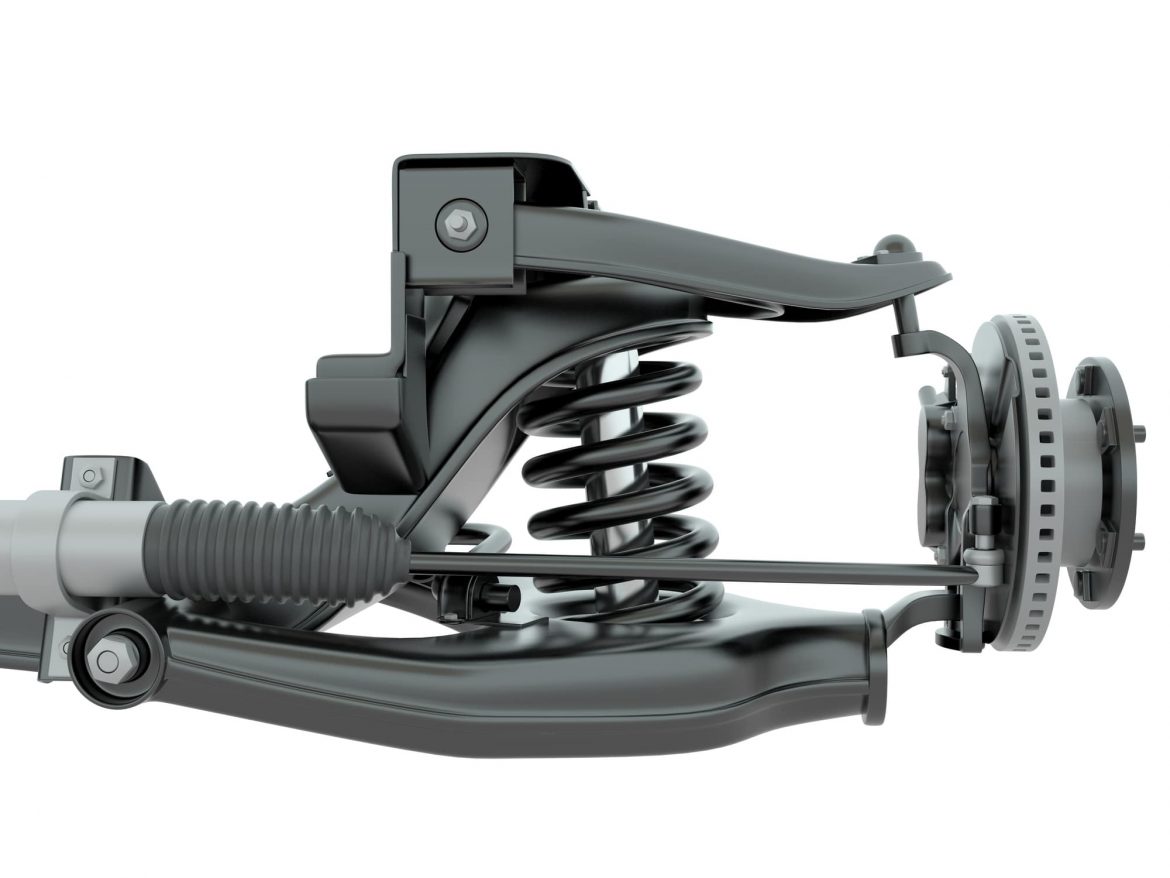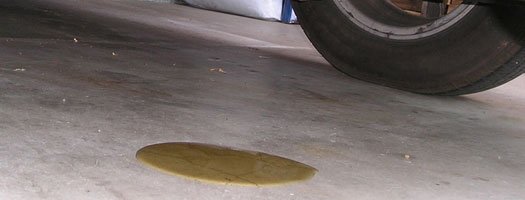If you have ever changed your own oil, you have already dealt with an oil pan and oil drain plug. They are simple parts of your car, but when the oil pan leaks, it is potentially disastrous. The good news is, it’s easy to fix. The same is true if the oil pan gasket or oil pan drain leak.
The oil pan is one of the most low-tech parts of a car. It is simply the pan in which the oil sits before being sucked out by a pump and circulated through the engine. An oil pan is to motor oil as a peanut butter jar is to peanut butter: the jar itself isn’t all that important but the peanut butter is, and without the jar there would be nowhere to keep the peanut butter. An oil pan does the same for oil, except no one runs their finger around an oil pan and licks it clean.
The oil pan hangs below the engine block, connected through a gasket that sits atop the pan by a series of bolts. It usually holds four or six quarts of oil, which are fed through the engine to lubricate, clean, and cool the metal parts of the engine that rub against each other hundreds of times each minute. Without motor oil, the engine would literally grind to a halt and its parts would melt.
So, this humble metal or plastic pan, along with its gasket and drain plug, serve a critical purpose, and their failure can cause a critical problem. Because the oil pan is exposed to the elements, hanging down as it does below the car chassis, it can get dinged by road debris, causing holes or cracks that allow oil to leak out. Leaks can also occur between the pan and the gasket if the gasket wears out, or at the drain plug, if it isn’t threaded properly. Under-tightening the drain plug can allow oil to leak through it, and over-tightening it can cause it to crack over time.
Symptoms of oil pan gasket leak
Most oil leaks look the same. Whether the oil is leaking from the oil pan, oil pan gasket, oil pump, engine block, oil filter, or most anywhere else, the same signs and symptoms will eventually become apparent.
Check engine light is lit. Many things can cause this light to display, but an oil leak is the most common. Once the light is visible, the hunt is on to determine the exact problem and its source. If the oil pan gasket is the guilty party, oil will probably be visible at the top of the oil pan and possibly dripping down the side of the pan. That is because the gasket sits at the top of the pan and any leaking oil will be drawn by gravity towards the ground. If the oil pan is sludgy with oil, it may be the oil pan gasket.
Oil level is low — This is a tipoff that oil is leaking from somewhere, prompting you to begin the search for the source. Unless oil is burning off under the hood or through the exhaust, usually in the form of blue or white smoke, the only way to find the source is by getting underneath the car and searching for a drip. (If smoke is coming from the hood or exhaust, the oil is leaking in the engine and burning off there.
Visible oil leak – If oil is leaking, it will often be visible on the ground beneath the front of the vehicle. Engine oil is thick, black or brown and greasy, and most notably has a rainbow sheen. Contrast that to coolant, which is watery and usually orange or green, and smells sweet, or transmission fluid, which is also thinner and pink.
Burning oil – When oil leaks onto the hot engine rather than onto the ground, the oil burns up, causing two things: blue or white smoke and a burning oil smell. If you smell something burning around the engine and you don’t know what it is, assume it’s leaking oil and take action. Oil pans leak onto the ground, so the burning oil symptom suggests a leak somewhere else.
Overheating engine – If this occurs, the damage has already begun. A car can run on low oil for a little while, but once the engine is overheating the situation becomes more dire. That’s because motor oil’s lubricating properties play a key role in regulating the temperature of the engine by preventing metal parts from grinding against each other. If the engine begins overheating, it should be serviced right away. Driving with the oil level so low that the pistons are scraping against the cylinders could quickly result in the need for a new engine.
Can I drive my car with an oil pan leak?
Driving a car with an oil pan leak more than a short distance or for multiple days is not advisable. Indeed, with any oil leak, failing to diagnose the source and take remedial action is very dangerous. At the very least, if the leak is slow, top off the oil every time it gets down a quart. This is a decidedly temporary measure and does not cure the underlying problem.
Another option to repair an oil leak anywhere in the vehicle is to pour a bottle of BlueDevil Oil Stop Leak into the crankcase. Oil Stop Leak seals engine oil leaks by reconditioning seals and gaskets and filling leaking cracks and pinholes. Using this method for oil pan repair can avoid the significant cost of an oil pan replacement.
These two measures work if you have a slow leak. A large hole in the oil pan caused by flying debris might be too large to respond to oil pan sealer, and it may leak too much oil to simply refill, so pay attention to the oil level following application of either of these methods.
How to fix an oil pan leak
Oil pan repair is easy for DIYers. If the oil pan gasket or other oil pan parts are the source of the leak, a Stop Leak product will generally solve the problem. With oil pans, small leaks are also solved with Stop Leak but larger leaks, those losing a quart of oil inside a week, require oil pan repair or oil pan replacement.
Each vehicle is different, so consult your owner’s manual for specifics, but these are some general guidelines for oil pan repair:
- To ensure your safety, make sure the vehicle is cooled down and situated on a flat surface with the parking break applied and the rear wheels chocked. Jack up the car and support it using jack stands. Disconnect the negative battery cable just to be extra safe.
- Find the oil drain and place a bucket or other receptacle beneath it. The receptacle must be able to hold four to six quarts of drained oil.
- With your face and body to the side of the drain plug, remove it and let the oil drain into your receptacle. Wait until it has completely stopped dripping before reinstalling the plug. Don’t tighten it too hard.
- Read the owner’s manual before embarking on this step. Remove the bolts holding the pan, disconnect it from the hose that circulates the oil and remove the pan. You may need to give it a not-so-gentle tap with a mallet or the back of a hammer to loosen it.
- Remove the oil pan gasket and scrap off the sludge from the engine. You may need to use a scraping tool or solvent to clean the area. It is important to get a tight fit with the gasket or else that could be a site of future leakage.
- Apply a cold welding compound to the crack or hoe and give it 24 hours to fully cure.
- Make sure the drain plug on the new pan is tight and secure and then refill the oil just as you would at the end of an oil change, pouring the proper amount of oil into the crankcase.
- Do a visual test to make sure you don’t have any leaking. If all systems are go, take the car off the jacks and reconnect the negative battery terminal. Start the engine and let it idle to circulate the oil, while watching for any leaks.
Doing this yourself can save as much as $1,000 on the cost of replacing the oil pan and its parts.
Oil pan repair vs. oil pan replacement
A repaired oil pan, if done correctly, might last the remaining life of the vehicle, but a repaired oil pan lacks the structural integrity of a new one. If you plan to keep the car five years or more, there is a risk the repairs will eventually fail. In that case, the oil pan should be replaced.
Replacing the oil pan is, in the short run, much more expensive than repairing it. A new pan purchased at an auto parts store costs between $150 and $700, and installation is another $200 to $400. However, replacing the pan is usually easier than repairing it, so an average DIYer can buy the pan and its accompanying parts and save some money.
To replace the pan, follow the steps above, replacing step 6 with this:. Install the new oil pan and oil pan gasket and oil pan plug and secure the bolts to the engine.
BlueDevil Products can be found on Amazon.com or at AutoZone, Advance Auto Parts, O’Reilly Auto Parts, NAPA, and other major auto parts retailers.
Related Articles



